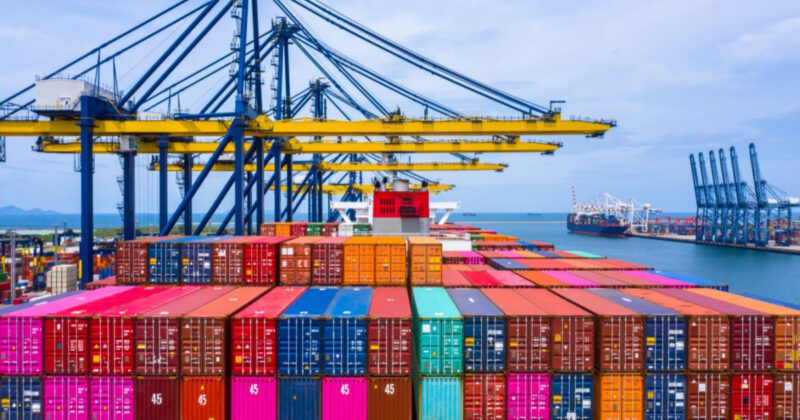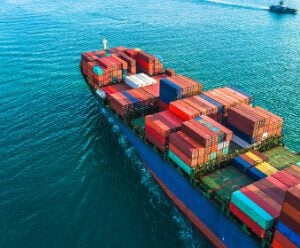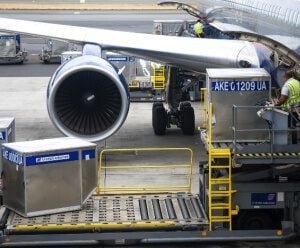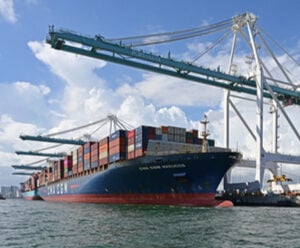随着集装箱运输的旺季即将来临,有两大趋势很可能决定未来几周和几个月内的市场状况。
首先,就东西方主要贸易航线通常运输的货物的需求而言,随着经济增长放缓、通胀拖累信心和底线以及俄乌战争继续困扰供应链,业内观点一致转向看跌。
其次,即使今年到目前为止运费费率一直在下降,第二季度经济增长也放缓,全球供应链仍处于紧张状态而且容易受进一步干扰的影响。
旺季来临前的未知因素
然而,目前无法确定未来全球经济衰退带来的影响会有多大,以及主要市场开始紧缩时集装箱运输需求可能会下降多少。
而且,即使集装箱运输需求显著下降,大多数分析师认为仍需要好几个季度才能使班轮船期回到正轨、消除港口拥塞并让空集装箱回到原位。实际上,即便第二季度需求疲软,改善班轮船期可靠性的进展甚微。
进入第三季度旺季,意味着货运量较第二季度会略微上升――第二季度是集装箱运输的传统淡季,美国和欧洲的港口拥塞现象很可能会进一步恶化,从而不可避免地导致船只运力无法用于满足需求,造成当地设备短缺,而且最有可能的是再次拉高即期运费费率。
“毫无疑问,很多经济指标都在恶化,一些市场有可能逐步走向放缓,但仍不清楚着陆的难度有多大,”DGF亚太区首席执行官Kelvin Leung说道。“可以确定的是,全世界仍有很多货物在运输途中,供应链瓶颈十分明显。
持续的困境
毫无疑问,多个瓶颈继续对海洋供应链的运行效率造成影响,而且今年晚些时候出现更多瓶颈的风险仍然很高。例如,中国严格的新冠疫情防控措施目前已经解除,尤其是上海一带,但无法保证今年晚些时候会不会再次出现多地封锁的情况。
在欧洲,北部枢纽港正在努力运出空箱,而船只周转时间延长了,从而导致运输时间增加。内陆铁路、驳船和公路运营商也在努力解决运力短缺问题。
DHL的《7月海运市场最新消息》指出,欧洲港口拥塞仍然十分严重,导致船期延误以及更多的承运商空船航行。该《最新消息》还强调,设备供应仍然非常紧张,尤其是40英尺高柜。
由于通胀,工会加大罢工力度以谋求更高的报酬,多个主要港口也受到影响。
美国东海岸港口继续承受港口拥塞之苦,因为在美国西海岸港口,随着先前的多年协议在6月底到期,工会代表正在与雇主协商新合同,因此承运商都试图避开美国西海岸港口。
如果谈判不顺利,那么今年晚些时候更多不利因素会显现,而罢工有可能导致29个港口关闭,包括对跨太平洋物流至关重要的洛杉矶港和长岛港。
班轮可靠性失效
所有以上不利因素都自然而然地在承运商船期可靠性方面表现出来。Sea-Intelligence航运咨询公司的最新全球班轮绩效(GLP)报告指出,今年的全球船期可靠性基本延续了2021年的趋势,在一个小范围内波动,但总体水平略低。
2022年5月,船期可靠性环比上升了2.1个百分点,达到36.4%,但同比仍然下降了2.3个百分点。“这意味着2022年前五个月内的水平都略低于2021年的对应月份,”Sea-Intelligence提到。
船只平均延误时间也在5月再次缩短,为6.17天。“目前的延误时间基本低于7天关口,但如果与过往相比每月仍然处于历史高位,只不过差值大幅减小,”该公司称。
马士基公司的船期可靠性为50.3%,是2022年5月可靠性最高的承运商,其次是汉堡南美船务集团,船期可靠性为43.7%。有六家承运商的船期可靠性处于30-40%区间,六家承运商的船期可靠性处于20-30%区间。
经济阴影继续扩大
降低需求是解决供应链问题的最直接方法,从而改善承运商的表现,但对于业内大多数承运商而言是难以下咽的苦果。越来越多的证据表明经济衰退正在发生。
世界银行预测,2022年,全球贸易同比增长速度将下降到4%,而全球发达经济体的经济增长率将从2021年的5.1%下降到2022年的2.6%。对于新兴经济体和发展中经济体,增长率预计将从2021年的6.6%下降到2022年的3.4%。
2022年,美国经济甚至可能发生衰退。6月,美联储主席杰罗姆·鲍威尔指出了衰退的“可能性”,而野村证券的分析师称美国正在“走向虚无”,第四季度“极有可能”发生轻微的衰退。
贸易受到的影响已经开始变得明显。疫情期间,因为服务活动受到限制而且政策支持力度加大,耐用品消费额大幅上升,超出了近期趋势。然而,野村证券称,迅速上升的利率和恶化的经济状况导致耐用品支出回落,而且这个趋势很可能在2022年剩余时间和2023年持续下去。
“尤其是,耐用品消费与住房销售在一定程度上是相互关联的,而最近住房购买力的下降有可能对耐用品消费造成显著影响,”该公司称。
野村证券目前预计,2021年全年和2022年上半年季度环比增幅显著的美国进口额将开始下降,直至2023年第三季度。
在中国,有越来越多的证据表明制造业和新增出口订单正在减少。特别是由于习近平主席实行的严格封控政策,导致世界银行将中国实际GDP增长预测下调到4.3%,而政府设定的目标是5.5%,去年增长率为8.1%。
在欧洲,几乎没有经济好转的迹象,俄乌战争将产生深远的影响。标普全球6月采购经理人指数调查数据表明,第二季度末,由于生产水平在过去两年内首次下降,欧元区制造业经济处于低位。总新增业务量和出口订单总量均下降,而企业信心下滑到过去25个月内的最低水平。
随着需求减少,由于各公司将重点放在未交付订单上,整个疫情期间显著增加的积压工作量也在过去近两年内首次下降。“各公司称,由于物价上涨和经济前景不明朗,客户在支出方面更加谨慎,因此需求开始疲软,”S&P全球市场情报首席商业经济学家Chris Williamson说道。
由于产量和销量低于预期,原料库存和未出售存货均有所增加,Williamson称这种衰退趋势“似乎注定将在未来几个月内增强”。
接下来会发生什么?
Sea-Intelligence咨询服务-全球供应链副总裁Bjorn Vang Jensen曾经预测,集装箱航线目前的繁荣“很可能将在2023年第三季度前后结束”,除非发生全球经济衰退。然而,他说,即使集装箱市场由于重大经济萎缩发生急剧衰退,承运商也不可能让费率回到注定亏损的水平――尽管运费费率不可避免地会下降。“牛顿第三定律将一如既往地发挥作用,”他说道。
DGF海运部全球主管Dominique von Orelli补充道,“全球经济需要进行一次重大修正,才能完全解决业内集装箱航线船期的可靠性问题。根据目前的预测,这种情况似乎不太可能发生。我预计,到今年第三季度及之后,供应链取得成功和连贯性的关键在于灵活变通。”









 简体中文
简体中文